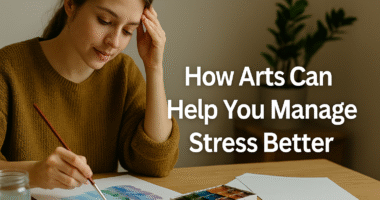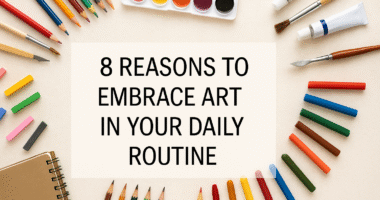Art has been part of human culture for thousands of years, influencing the way people think, feel, and connect with the world. From music and painting to dance, literature, and digital design, the arts play an important role in shaping our experiences. In modern life, art is everywhere—on our screens, in our communities, and even in the small details of daily routines. But how exactly do the arts impact our daily lives?
The Emotional Power of Art
Art has the ability to touch emotions in ways that words often cannot. Listening to music can lift your mood after a stressful day, while looking at a painting can inspire calm or spark creativity. Films, photography, and theatre performances allow people to explore emotions such as joy, sadness, and hope.
Art as Therapy
Many people turn to art for healing. Practices like art therapy or music therapy are widely used to reduce stress, improve mental health, and support emotional well-being. Even something simple—like drawing in a notebook or listening to a favorite song—can have a powerful effect on mental clarity.
Art Shapes Culture and Identity
Arts are deeply connected to culture and identity. Through traditional crafts, folk dances, or community festivals, people celebrate their heritage and keep traditions alive. At the same time, modern art forms—like street art or digital media—allow individuals to express personal stories and perspectives.
Building Bridges Between Communities
Art also promotes understanding among different groups. Cultural exchange through music, film, or exhibitions helps people learn about new traditions and respect diversity. This makes societies more inclusive and connected.
The Role of Arts in Education
Education and art go hand in hand. Children exposed to drawing, theatre, or music at an early age often develop better problem-solving skills, creativity, and confidence. In schools, art activities encourage teamwork and critical thinking.
Creativity for the Future
In today’s fast-changing world, creativity is highly valued. Employers look for people who can think outside the box and offer new solutions. Arts education supports this by teaching innovation and imagination.
Arts in Everyday Surroundings
Art is not limited to galleries or theatres—it exists in the design of clothes, architecture of buildings, and even the graphics on mobile apps. Daily exposure to art shapes our sense of beauty and influences lifestyle choices.
Inspiring Work and Home Spaces
Well-designed spaces decorated with colors, paintings, or sculptures can increase motivation and productivity. Public art, such as murals or statues, makes cities more vibrant and welcoming.
Conclusion: Why Arts Matter in Daily Life
Arts are not just entertainment; they are a vital part of human life. They influence emotions, strengthen culture, improve education, and enrich our environments. Whether through music, films, design, or festivals, the arts continue to shape how people live, connect, and grow. By appreciating art in its many forms, we gain a deeper understanding of ourselves and the world around us.









